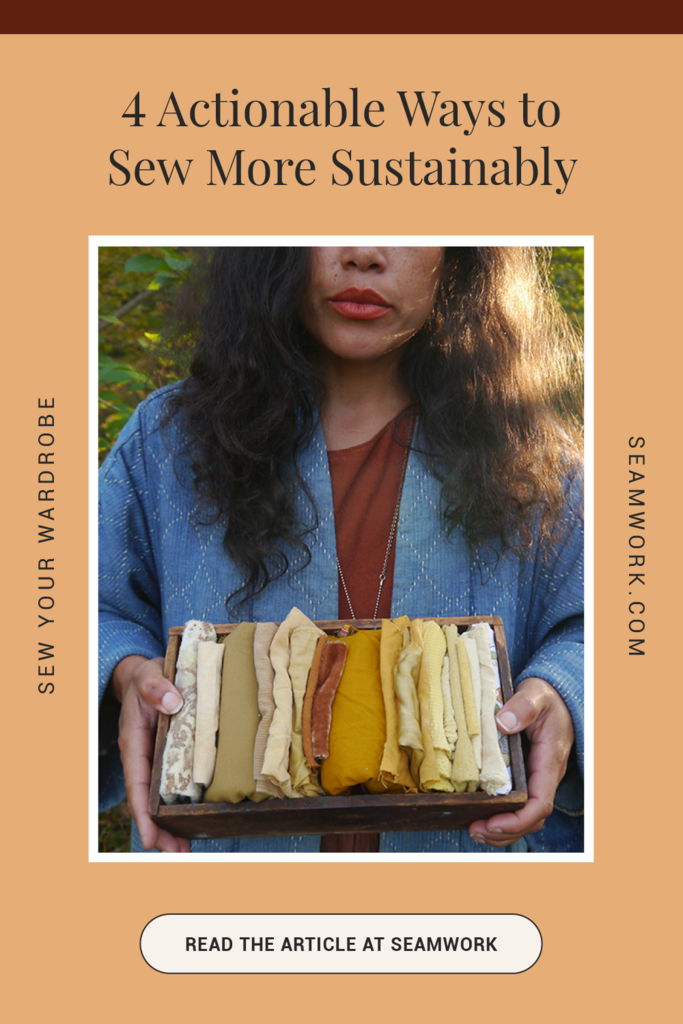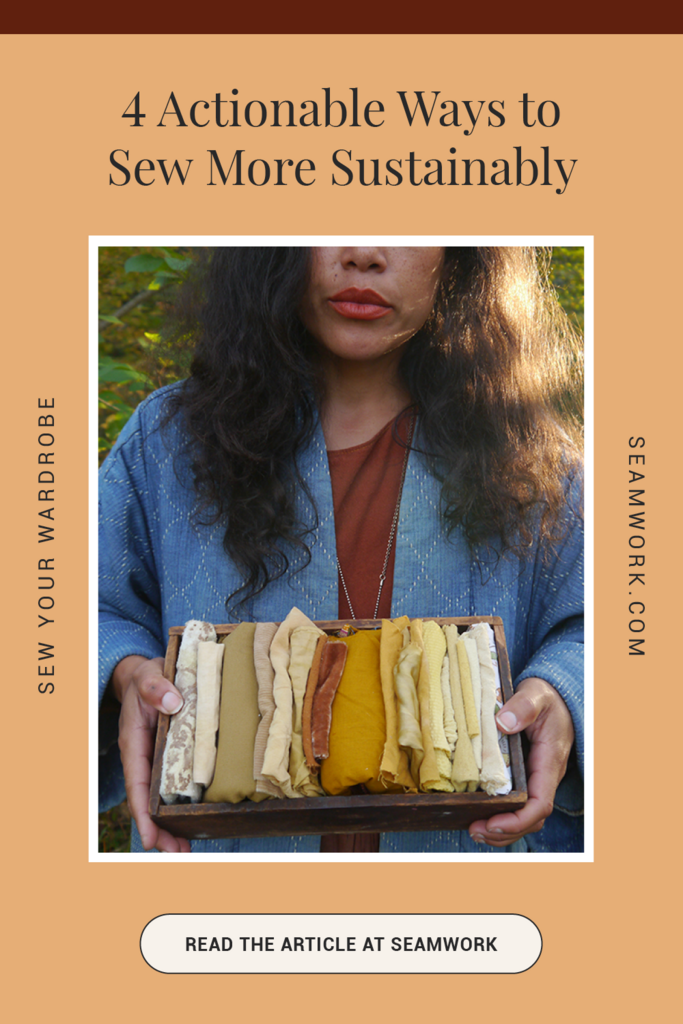Many of us turn to sewing to disengage from fast fashion and all the environmental impacts that come with it. Even though sewing is a better alternative, that doesn't mean that it's perfect, and it doesn't mean that it's without its impact.
Here at Seamwork, we recently received B Corp certification. It took almost two years, and we had to explore ways to improve our environmental impact.
So even though you’ll find dozens of articles about sustainability in the Seamwork archives, we're always trying to find new ways to create more sustainable sewing practices and reduce our overall sewing waste.
Since so many Seamworkers have found creative ways to sew more sustainably, we decided to ask you for even more tips! Below are four actionable ways you can sew more sustainably straight from the Seamwork Community.
Oh, and if you want to hear about the exact steps we took to decrease our environmental impact for B Corp certification, listen to episode 126 of the Seamwork Radio podcast. We now use a projector in the studio instead of printing patterns on paper, and you can do this at home, too!
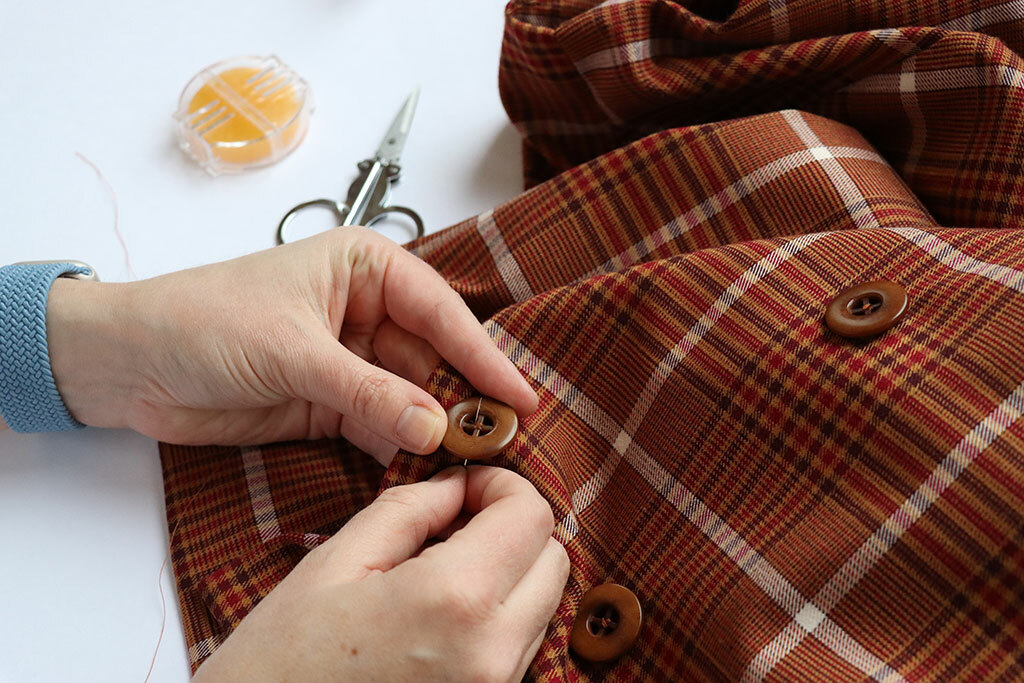
1. Maintain Your Clothes
Laundry is a big part of your sewing time. And your laundry also plays a big role in sustainable sewing!
One of the best ways to reduce waste while sewing is to ensure that your garments last as long as possible, which might mean washing them less frequently.
Seamworker Marcia says, “We hear that frequent washing of clothes causes them to wear more quickly, even with careful washing. I try to wear clothes at least twice before washing and try to hang them up, and put them away carefully to avoid wrinkling so that they can be worn again. Less washing means saving water, and water shortages are a problem in places throughout the world. When I can, I use the clothesline for drying, saving on energy.”
Even some big clothing retailers, like Patagonia, are pushing customers to learn how to take care of their clothing. They even have a helpful guide on their website that teaches you how to launder, remove stains, and care for all their specialty fabrics.
And even Levi’s, with all its environmental controversies, encourages customers to wear their jeans ten times before washing and then line-dry.
It’s not all about laundry, though. You can also maintain your clothes by fixing them along the way. Read Repairing your clothes is sustainable fashion if you need a little creative boost for your mending.
While repairing your clothes includes visible mending, darning your socks, and making mending a part of your sewing practice as a whole—don’t forget that alterations can also extend the life of your garment.
Seamworker Barb says, “I've saved tons of clothes over the years that did not fit. And now I'm looking for ways to add fabric, so they fit, or removing the turtleneck collar that is too tight and creating a new neckline. Think of it as learning to sew on old clothes. If you mess it up, you do not waste money on fabric if it worked, great.”
Speaking of fit, if you can reduce the number of muslins (even wearable ones!) in your sewing, you’ll save fabric and money. One of the best ways to do this is to track your fitting adjustments—which you can easily do with our free downloadable fitting journal. After a few projects, you’ll notice trends, and you can make flat pattern adjustments to avoid sewing multiple muslins. Note: this doesn’t mean you shouldn’t sew a muslin. It’s such an important part of the fitting process and can save you from wasting your fashion fabric. Always sew a muslin!
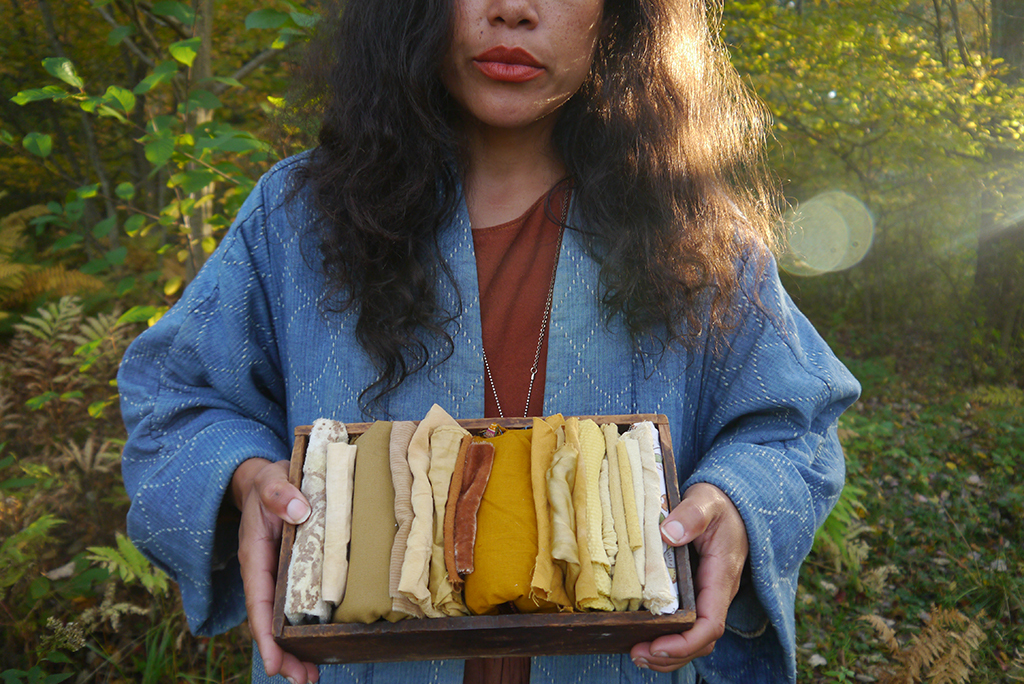
2. Save Your Scraps
“As I transform my scraps into delightfully arranged patchworked textiles, I feel like a wizard performing a magic spell—turning lead into gold.” Textile artist Christi Johnson describes how powerful your fabric scraps can be.
In a three-part series for Seamwork, Christi shares her process for keeping and sorting scraps and transforming them into new textiles. You can also hear Christi’s story in the Seamwork Radio podcast archives.
We’ve all felt that pang of guilt when we throw our scraps away, so moving forward hang onto them instead of chucking them into a bin! There are many clever ways to transform your scraps, and doing so will ensure they stay out of the landfill for as long as possible.
Here are some scrap-busting ideas:
- Sew an accessory with leftover yardage. The Graham tie and Drew headband are perfect for this.
- Turn your fabric scraps into scrunchies with this magic trick!
- Lingerie is also a great project for scraps. Read Scraptastic Lingerie to learn how to make the most of your scraps.
- Keep your scraps for rags. Old T-shirts are perfect for oiling and treating wood.
- Google scrap-busting projects. Your search will include things like quilts and fabric-stuffed poufs, but it will also have surprise ideas, like making Boot Buddies to keep your boots in shape when you aren’t wearing them.
- Join a scrap-busting conversation on the Community. These posts have hundreds of unexpected ideas for scrappy projects.
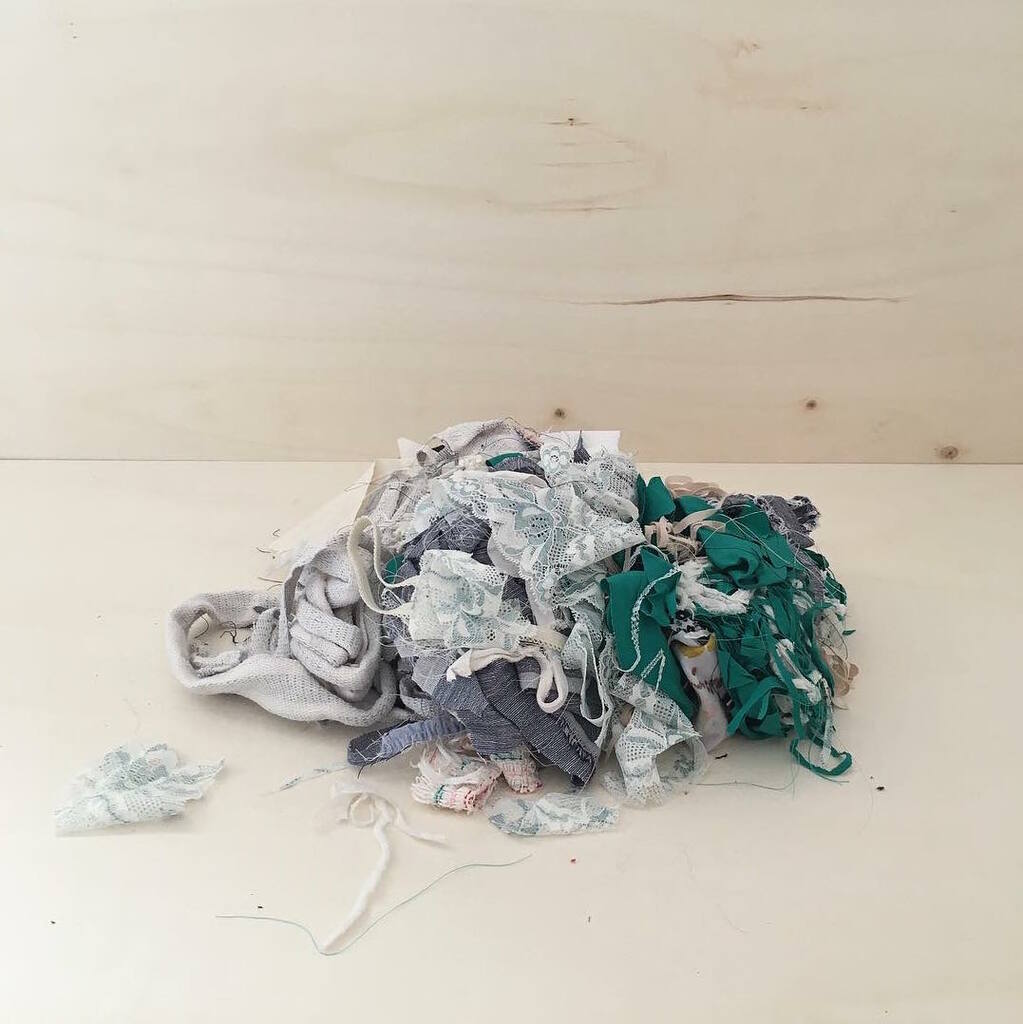
3. Think Before You Toss
The next time you are about to toss out a garment or some yardage, pause. Is there somewhere else this could go?
Schools often accept fabric scrap donations for craft projects, humane societies often accept textiles for pet bedding, and you might be able to find a local textile recycling program. Just Google “textile recycling near me.”
If you need help finding local resources, ask the Community. We have a forum just for local sewing, so you can connect to makers nearby and find out what they are doing with their scraps.
There’s also a forum for a fabric and pattern exchange if you want to swap with your fellow Seamworkers!
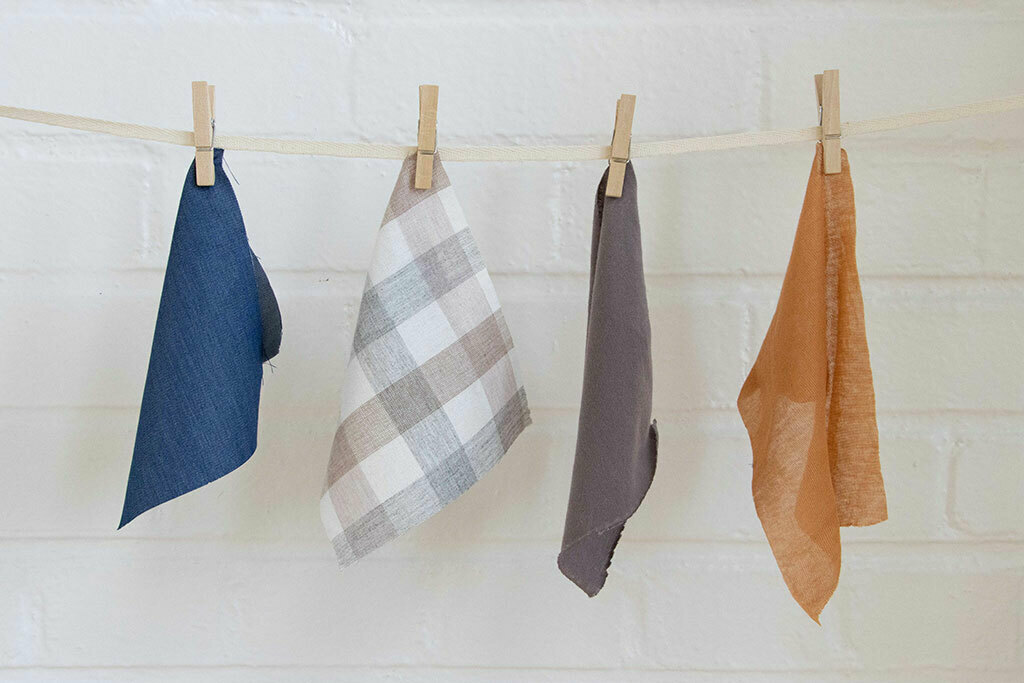
4. Consider How and Where You Shop
Since it’s not always cheaper to sew your own clothes rather than buy them, you have plenty of opportunities to consider how and where you shop.
If you want to curb impulsive fabric shopping, making wardrobe plans can help. This is a big focus for Design Your Wardrobe, but there are also ways to make plans for your fabric shopping specifically.
-
Learn how to understand fabric terminology when you are shopping online. Getting familiar with fabric vocab, like drape, weight, and stretch, will help you buy the right fabric. -
Shop for fabric you’ll actually sew. This article has six fabric shopping rules to help you stop impulse buying fabric you don’t use. -
Sew with deadstock fabric. Everyone is doing it! - Ask yourself, is your fabric sustainable? The world of sustainable textiles is always evolving, so stay on top of certifications and new technological advances.
Another simple way to change your shopping habits is to use your sewing powers to replace disposables in your home. For example, you can replace common bathroom supplies with fabric scraps and a few notions. Or you can reduce waste in your kitchen with these clever sewing projects.
Finally, one more tip regarding sustainable shopping: get to know your local fabric and yarn shops. The more support we give to independent fabric shops, the more noise we can all make about the future of sustainable fabrics. Here’s a list of our favorite shops from all over the world.
Do you have a sustainable sewing tip to share? The Community is full of creative, unexpected ideas, and we’d love to hear yours! Start a post or leave a comment for your fellow Seamworkers.
Love the article? Pin it for later.
